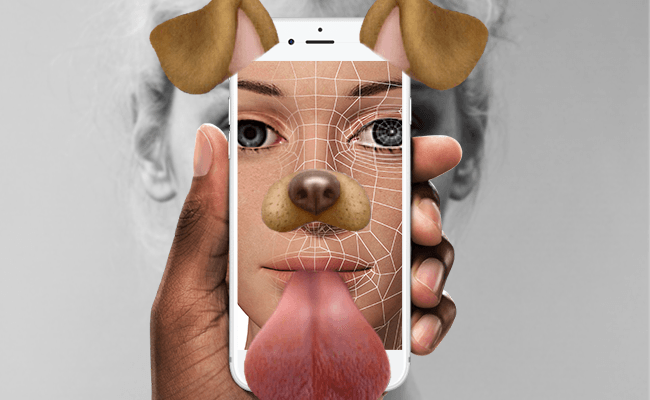Would you like a dog snout, cat eyes or fluffy bunny ears? The choice is yours. Virtual selfie filters have become a widespread phenomenon on social media platforms such as Snapchat and Instagram. But what kind of self do these animal filters show us?
"Animal filters are not about animals. They are about humans."
Photo-editing is nothing new, and selfie enhancing software is omnipresent. Face filters herald an evolution of photo-editing as they are based on the technology of augmented reality - which enables real-time editing.
When you take a selfie with Snapchat or Instagram, the mobile camera recognizes the appearance of your face and instantly augments a layer on top. These augmenting technologies merge the virtual representation of our human face with the simulation of, for example, an animal.
The reach of those filters goes beyond augmentation, which has become evident with the rise of Snapchat dysmorphia as a result of beautifying filters. They largely shape our experience of self. But what is the deal with those cute animal filters?
Humanizing wild nature
When you think about face filters, chances are, you think about the classic Snapchat dog snout: face filters and the depiction of animals are fascinatingly interconnected.
Similar to how we humanize our pets and dress up our cats and dogs, we humanize wild animals by making them into cute and aesthetic filters. And while real nature might be scary and unpredictable, animal filters are not. They are a clear record of our estranged relationship with wild nature.
Rather than hairy, strong and wild, animal filters look fluffy and cute.
The majority of animal filters additionally add makeup, enlarge the eyes and make the chin smaller. These are conventions of female beauty, that stem specifically from the Asian notion of cuteness or kawaii.
Kawaii is based on the infantilizing of facial characteristics and is increasingly influencing Western beauty ideals. As humans, we are attracted to large eyes and round faces because they resemble babies.
The cuteness of babies and animals instinctively triggers our urge to take care of them. Portraying yourself as a cute animal might thus be a very effective - and somehow even natural - way to appear more likeable.
Bio-mimicking our self(ie)
Animal filters are a selective and aesthetic form of biomimicry. Nature has an aura of authenticity and beauty and is a terrific marketing tool. We call this phenomenon biomimicmarketing: using images of nature to market a product.
Mostly, the product itself has nothing to do with its natural reference: Lacoste is not about crocodiles, Linux is not about penguins, Bacardi is not about bats and Apple is certainly not a fruit company. Similarly, animal filters are not about animals. They are about humans.
We use the aesthetics and specific cute qualities of animals to optimize our personal image. It seems like animal filters give us the opportunity to play with the notion of being an animal, but instead they reinforce the boundaries of human beauty norms.
I am not an animal
The cute versus wild paradox is illustrating the human experience of nature in our contemporary society. The use of animal filters is actually emphasizing that “I am not an animal, therefore I can pretend to be one”.
Contrary to our first hunch, animal filters do not bring us closer to animals. Instead, they enable us to distance ourselves from the species we do not belong to. The humanized animal filters are reinforcing our anthropocentric worldview, in which humans are the center of existence and largely distanced from animals.
We all love face filters, but we prefer to stay far away from our wild, beasty self.

Alexis
I,m a furry
I like animals
Posted on